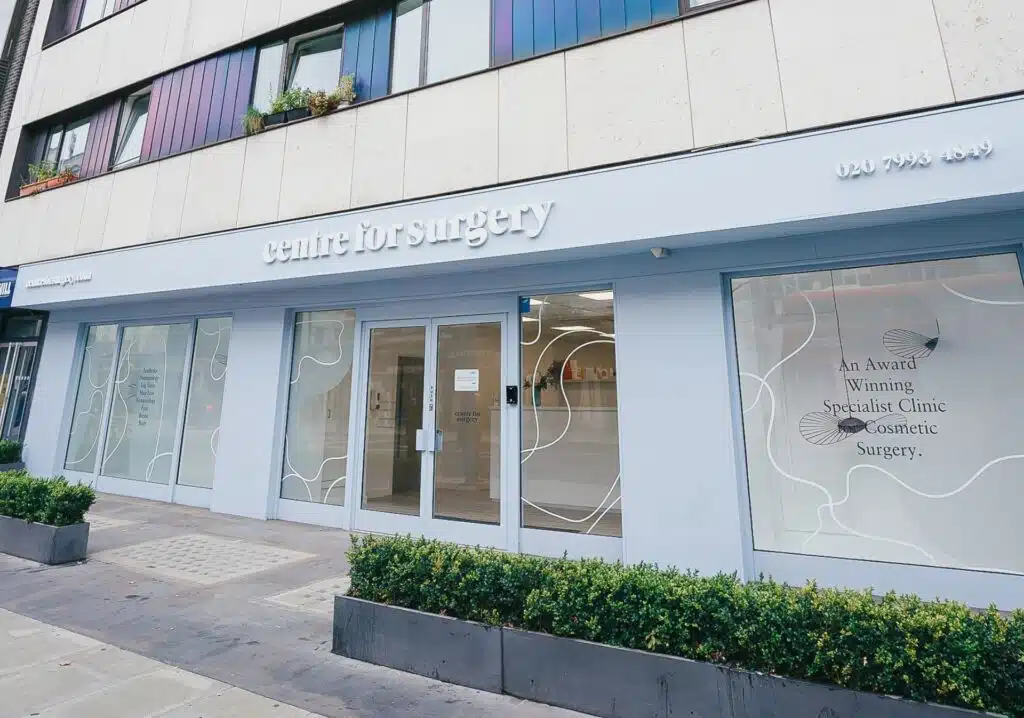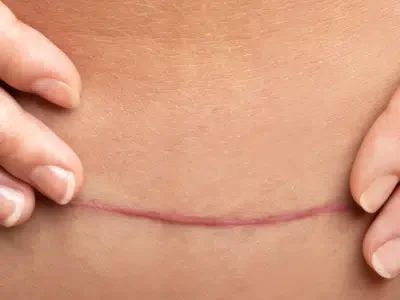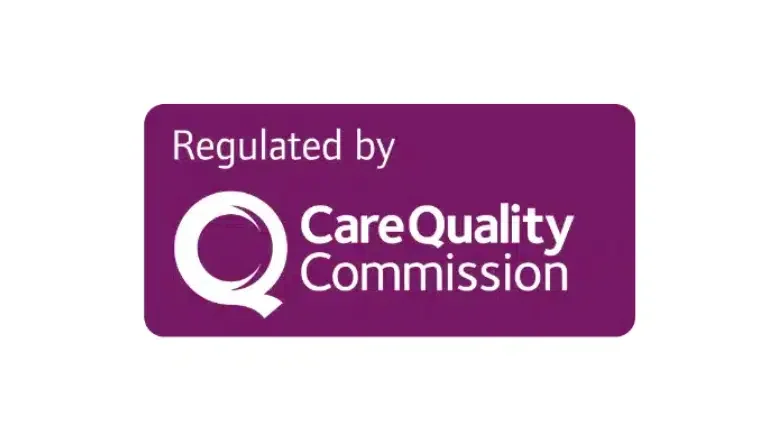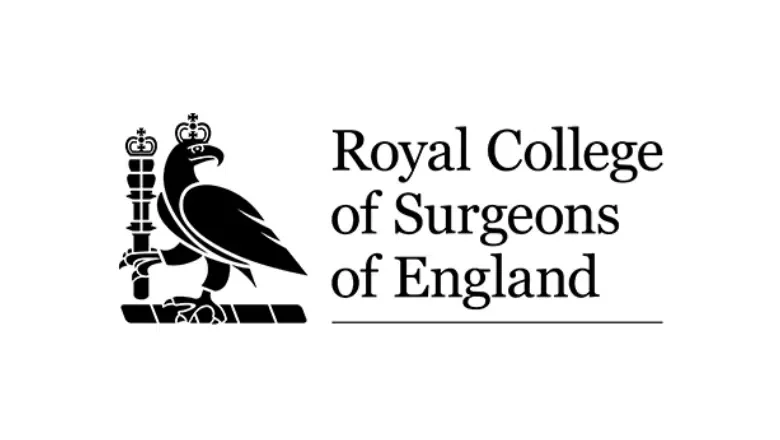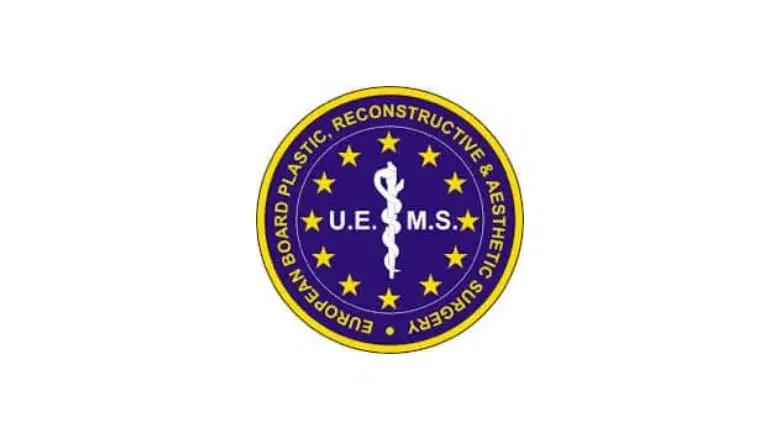Body Lift Surgery Explained: What It Is and Who It’s For
A body lift operation, sometimes called a belt lipectomy or torsoplasty, is a surgical treatment designed to remove extra skin and fat from various parts of your body like the tummy, hips, thighs and even the back area. The aim is to lift, tighten, and firm up the skin in the focused areas. This kind of surgery might be a good option for you if you’re dealing with sagging or surplus skin due to things like significant weight loss, having a baby, getting older, or damage from the sun. While body lift surgery was initially more common among people who had lost a lot of weight, often following weight-reduction operations, it’s now also sought after to tackle skin issues that come with ageing or after having one or multiple children.
RELATED: Body Shaping Surgery after Massive Weight Loss
At Centre for Surgery, our skilled plastic surgeons regularly carry out two main types of body lift surgeries: upper body lifts, known as torsoplasty, and lower body lifts, called belt lipectomy. We are committed to helping our patients reach the look they’re aiming for.
When a Body Lift Surgery Might Not Be Right for You
Body lift surgery offers significant benefits for people with excess or sagging skin, mainly if it’s due to factors like substantial weight loss. However, it’s not suitable for everyone. For instance, if you’re significantly overweight or your Body Mass Index (BMI) is over 30, you might not be the best candidate for this treatment. This is because there’s a higher risk of complications and the results might not be as good as you’d hope for.
Medical conditions can also make you ineligible for body lift surgery. If you have uncontrolled diabetes, heart conditions, or disorders that affect your blood’s ability to clot, undergoing this surgical procedure could be risky for you.
Moreover, it’s essential to understand that body lift surgery isn’t designed to remove large fat deposits. So, if you’re not close to your target weight, this might not be the right option for you. The ideal candidate should be at, or close to, their ideal weight and have stably maintained that weight. If you do have some isolated fat areas but poor skin elasticity, your surgeon might suggest combining liposuction with a body lift to achieve the outcomes you’re looking for.
Understanding the Different Types of Body Lift Surgery
When you’ve lost a lot of weight or reached a certain age, you might notice that your skin doesn’t ‘snap back’ as it used to, leaving you with saggy or excess skin in various areas like your abdomen, back, or thighs. While shedding the pounds can be done through diet and exercise, removing this loose skin usually requires surgical intervention. Body lift surgery can improve your look and make you more comfortable and boost your mobility if you’re dealing with this issue.
Here’s a breakdown of the different kinds of body lift surgeries available:
Lower Body Lift
A lower body lift targets the lower part of your body including your tummy, hips, bottom, and thighs. The goal here is to remove extra skin and fat to give you a more streamlined look. In technical terms, a lower body lift usually involves a tummy tuck (abdominoplasty), thigh lift (thigh lipectomy), and a buttock lift or buttock lipectomy, all rolled into one.
RELATED: Surgical Solutions for Sagging Thighs after Weight Loss
Upper Body Lift (Torsoplasty)
If your upper body is of concern, including areas like your breasts, chest, back, and arms, then an upper body lift could be the route to take. Tailored to each patient’s specific needs, an upper body lift might include an arm lift (brachioplasty), as well as breast lifts or breast enlargements for women. Sometimes, liposuction is also used, particularly as part of mummy makeover surgeries. If you wish, you can also combine an upper body lift with a lower body lift for a more complete transformation.
Full Body Lift
This is the ‘all-in-one’ package that includes both lower and upper body lifts. It is designed for those with excess skin and fat throughout their body. A full body lift offers the most comprehensive transformation, as it addresses sagging skin and extra fat.
RELATED: Recovery After Full Body Lift Surgery
Your plastic surgeon will consult with you to determine which type of body lift suits your particular needs. Generally, a lower body lift is geared towards those with issues in the lower half of their bodies, while an upper body lift targets issues in the upper half. A full body lift, as the name suggests, is for those looking for a more extensive makeover, affecting both the upper and lower parts of the body.
Determining If You’re the Right Fit for Body Lift Surgery: A Comprehensive Guide
Figuring out whether body lift surgery is the right choice for you involves more than just a desire to improve your appearance; it also requires some basic self-assessment and professional medical advice. Below is a step-by-step guide on how to conduct a self-assessment at home, followed by the importance of consulting with a qualified surgeon for a definitive answer.
Conducting a Self-Assessment at Home
Stand Before a Mirror
Position yourself in front of a full-length mirror to get a clear view of the areas that body lift surgery commonly targets: your abdomen, outer thighs, and posterior buttocks.
Evaluate Your Abdomen
Use your thumb and palm to grasp one edge of the skin on your lower abdomen. Then, use your other four fingers to hold the skin on the opposite side. Gently pull both sides to simulate tightening. If you like how your skin looks tightened and notice a lifting of the pubic mound, you could be a suitable candidate for an abdominoplasty, also known as a tummy tuck.
Assess Your Thighs
Hold onto the skin around your hips and thighs, and then lift it to see how it could potentially look after a lift. If the appearance of lifted, more contoured hips and thighs pleases you, an outer thigh lift, or thigh lipectomy, might be a good fit.
Check Your Buttocks
Turn around so that your back faces the mirror. Reach back and lift your buttocks with your palm. Observe how your posterior looks when it’s lifted. If you’re happy with the improved shape and elevation, then you may benefit from a posterior buttock lift.
Consulting with a Surgeon at Centre for Surgery
Though a self-assessment can give you a basic understanding of what to expect, getting professional advice is crucial for a more accurate evaluation. A qualified surgeon at Centre for Surgery will consider various factors, including your medical history, overall health, and specific aesthetic goals, to determine if you’re an ideal candidate for body lift surgery. This involves an in-depth consultation, physical examination, and potentially some diagnostic tests.
Only a certified medical professional can accurately assess your suitability for the procedure and tailor the surgery to meet your individual needs. Therefore, if you’re considering body lift surgery, book a consultation with us to find out whether this life-changing procedure is the right option for you.
Preparing for Body Lift Surgery
Getting ready for a body lift surgery is a crucial phase, and taking the proper steps to prepare can contribute to a smoother procedure and a quicker recovery. Below are some general guidelines you can follow to set the stage for a successful surgical outcome:
Health and Lifestyle Adjustments
Quit Smoking
Smoking can adversely affect your body’s ability to heal and significantly increase the likelihood of complications during and after surgery. Aim to quit smoking at least 6-8 weeks before your surgery date, and continue to abstain throughout the recovery period.
Review Medications and Supplements
Blood-thinning medications and supplements like aspirin can enhance the risk of excessive bleeding during the procedure. Discuss any medications or supplements you are currently taking with your plastic surgeon. They may suggest adjustments or discontinuations for a few weeks leading up to the surgery.
Maintain a Nutritious Diet
A balanced diet rich in vitamins and minerals can help prepare your body for the physical stress of surgery and promote better healing post-op. Pay attention to your intake of protein, fruits, vegetables, and whole grains.
Regular Exercise
Exercise is a valuable way to boost your overall health and prepare your body for the surgery. However, be sure to consult your plastic surgeon about the types of exercise that are safe and beneficial for you during this period.
Weight and BMI Considerations
- Stable Weight: Aim to maintain a stable weight for at least two months prior to the surgery. Weight fluctuations can affect the surgery’s outcomes and may lead to complications.
- Check BMI: Ideally, your Body Mass Index (BMI) should be less than 30 before undergoing a body lift. A higher BMI could increase the risk of complications.
Final Steps
- Preoperative Testing: Your surgeon may require certain tests, such as blood tests or ECGs, to ensure you are fit for surgery.
- Pack Essentials: Prepare a bag with all the necessities you’ll need post-surgery, including comfortable clothing, prescribed medications, and personal care items.
- Arrange Support: Have someone you trust ready to assist you in the first days or weeks after surgery. You’ll need extra hands, whether it’s transportation home after the procedure or help around the house.
Following these guidelines and collaborating closely with your plastic surgeon can increase the likelihood of a successful body lift surgery with a quicker and more comfortable recovery.
What to Expect During Your Recovery After Body Lift Surgery
After undergoing body lift surgery, knowing what to expect during recovery is essential to ensure optimal healing and results. Recovery is vital to the surgical process, and understanding the timelines and guidelines can help you plan accordingly. Here’s what you need to know:
The Immediate Aftermath
Compression Garment: After the surgery, you will be fitted with a custom-designed compression garment. This garment helps to reduce swelling and supports the newly contoured areas of your body. You will typically need to wear it for several weeks.
Work and Daily Activities
Taking Time Off Work: Plan on being away from work for about 3 to 4 weeks to allow sufficient time for healing. The exact time may vary based on your job type and your personal healing progress.
Driving Restrictions: You should also avoid driving for at least four weeks after the surgery. Driving requires physical exertion and poses a risk if you need to make sudden movements.
Physical Activity
Light Activities: By the second week after surgery, you may be able to resume some of your daily activities, provided they don’t involve strenuous physical effort. Walking short distances indoors, for example, can be a good way to slowly reintroduce activity without stressing your surgical sites.
Exercise and Heavy Lifting: Intense workouts and heavy lifting should be avoided for at least 6 to 8 weeks or until your surgeon gives you the green light.
Healing Milestones and Follow-Up
First Follow-Up: You’ll usually have your first post-operative check-up within a week or two of the surgery to assess the healing process and remove any sutures if necessary.
Subsequent Check-ups: In the months following the surgery, you will have additional follow-up appointments to monitor your long-term healing and results.
Signs of Healing: As the weeks go by, you will notice a gradual reduction in swelling and bruising. This is a positive indicator that your body is healing well.
What to Watch For
Complications: Watch for signs of complications, such as severe pain, infection, or unusual discharge from the surgical site. If you experience any of these symptoms, consult your surgeon immediately.
By carefully adhering to these guidelines and communicating closely with your surgical team, you can anticipate a smoother, more comfortable recovery period and look forward to enjoying the long-lasting results of your body lift procedure.
Weighing the Pros and Cons of Full Body Lift Surgery: A Detailed Look
Opting for a full body lift surgery is a significant decision that should be carefully considered. Just like any other surgical procedure, a full body lift comes with its set of benefits and drawbacks. Here’s a comprehensive rundown to help you weigh your options:
Pros
All-Inclusive Approach
One of the most appealing aspects of a full-body lift is that it’s a comprehensive procedure. It targets multiple areas of the body—from the abdomen, thighs, and buttocks to the arms and breasts—providing an overall aesthetic improvement.
Long-Lasting Results
If you maintain a healthy lifestyle, the outcomes of a full body lift can last for many years. This can boost your confidence and overall quality of life for a long time to come.
Enhanced Mobility
Excess skin and fat can restrict movement and make everyday activities more challenging. By eliminating these obstacles, a full body lift can significantly improve your mobility and allow you greater freedom in your day-to-day life.
RELATED: Recovery After Full-Body Lift Surgery
Cons
Cost Factor
Full body lifts can be quite expensive, making the financial aspect a considerable hurdle for some people. Depending on various factors like location and the surgeon’s expertise, the costs can be substantial.
Extended Recovery Time
Post-surgery, expect a considerable recovery period. The time needed can range from several weeks to a few months, during which you may experience swelling, bruising, and general discomfort. This also means you’ll likely need to take time off work and limit certain activities until you’re fully healed.
Risk of Complications
As with any surgical procedure, there are inherent risks, such as infections or visible scarring. Choosing a skilled and experienced surgeon can help mitigate these risks, but it’s important to be fully aware of them.
Commitment to Lifestyle Changes
You must commit to a healthy lifestyle to preserve the surgery’s results. This means regular exercise and a balanced diet are non-negotiable. This can prove challenging for those who’ve struggled with weight loss or maintaining healthy habits.
Frequently Asked Questions About Body Lift Surgery
What’s the healing process like after having body lift surgery?
After body lift surgery, you’ll generally need to take around 3 to 4 weeks off work to let your body heal properly. During this time, it’s normal to feel some pain, and you might also see swelling and bruising. This is all a standard part of getting over any kind of surgery. Your doctor will usually give you some pain relief medication to help manage any discomfort you’re feeling.
Who should consider getting body lift surgery?
If you’ve lost a lot of weight or have loose skin and fat due to getting older, pregnancy, or other life events, then you might be a good fit for body lift surgery. It’s also important that you’re in good general health and have a realistic view of what the surgery can and can’t do for you.
Are there any risks with having body lift surgery?
Like any type of surgery, getting a body lift has risks. You could face complications like bleeding or infection, and scarring is also a possibility. But you can reduce these risks by listening closely to your surgeon’s advice both before and after the procedure. It also helps if you’re already leading a healthy lifestyle.
Will there be visible scars after the body lift surgery?
Yes, you will have some scars after the surgery, but the good news is they can often be covered up by clothes or even your swimsuit. The size and location of the scars depend on how extensive your surgery is and the specific methods your surgeon uses.
Can I get other cosmetic procedures done simultaneously as a body lift?
You can combine a body lift with other cosmetic surgeries like liposuction or a tummy tuck. Whether or not this is a good idea for you will depend on your personal health and what you want to achieve with the surgery. Always discuss your options with a qualified plastic surgeon, especially if you’re considering multiple procedures at once.
Why Choose Centre for Surgery for Your Body Lift Surgery?
When it comes to body lift surgery, you want to ensure that you’re in the best hands possible. Centre for Surgery, located at 95-97 Baker Street in London, offers unparalleled expertise, state-of-the-art facilities, and a track record of outstanding results. Here are some compelling reasons why you should consider us for your transformative journey.
Experienced Surgeons
Our clinic is home to some of the UK’s leading plastic surgeons, highly skilled in performing upper body lifts (torsoplasty) and lower body lifts (belt lipectomy). When you choose Centre for Surgery, you choose a professional team dedicated to your aesthetic and functional goals.
Patient-Centric Approach
We take the time to get to know you and understand your needs. From your initial consultation to post-operative care, we ensure a personalised approach so you can achieve the best possible results.
Cutting-Edge Technology
Our facilities are equipped with the latest technology in plastic surgery, ensuring that your procedure is conducted in the safest, most effective manner possible.
Patient Testimonials
Don’t just take our word for it! Here’s what some of our previous patients have to say:
“My experience at Centre for Surgery was nothing short of phenomenal. My surgeon was supportive every step of the way, and the results have exceeded my expectations!” – Emily R.
“I never thought I’d feel this confident again. The team at Centre for Surgery changed my life, and I can’t thank them enough.” – David S.
Convenient Consultations
To schedule your consultation and take the first step towards a new you, reach out to us via:
- Phone: 0207 993 4849
- Email: contact@centreforsurgery.com
Comprehensive Information
Still unsure or looking for more information? Check out our plastic surgery blog to learn about body lift surgery and other procedures. Here’s the link to our plastic surgery blog.
Choosing the right clinic for your body lift surgery is a crucial decision. At Centre for Surgery, we offer exceptional technical skill and a commitment to your overall well-being. We invite you to join our community of satisfied patients.

